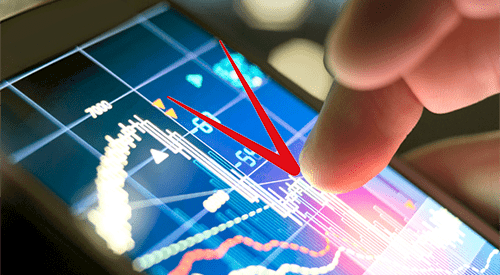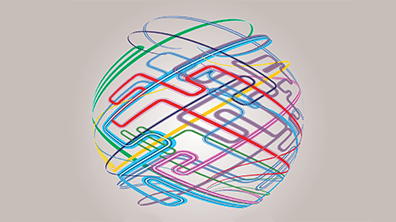One day, we could be living and working in a ‘digital metaverse’, from digital twinning and avatars to next-gen user interfaces (UI). This data-driven metaverse is made up of different but connected virtual worlds with a single currency or non-fungible token (NFT) ‘flowing’ through them, driven by the numerous disconnected (but growing) number of virtual worlds in use currently.
This is according to Sophie Hackford, futurist, technologist, researcher and anthropologist and former Virtually Live speaker.
Global gaming platforms Minecraft and Roblox have increased in popularity since the global pandemic both use separate currencies, and every virtual world and platform still has different UI, but Hackford said the direction of travel, especially since the pandemic, which accelerated data’s adolescence, points to a zero UI future.
“The whole world will be a kind of UI. It isn’t about recreating the 2D internet or moving a 2D communication platform into a 3D one, but totally re-imagining how we do business and how we think about things,” she said.
There is already substantial movement in this area. Hackford cited virtual fashion house The Fabricant, which produces digital-only clothing for adults. It predicted that in the future, digital fashion will be more than just a garment. It will be a password or a ticket to access more of the virtual world.
Google’s Project Starlight, available only in a few Google offices, reimagines an entirely new world: users can interact with holographic images of their colleagues, acquaintances and friends as if they are in the same room with them. Real estate platform Bella Virtual Staging uses 3D modelling, rendering software and expertise to enable clients to view digital replicas of current properties. The automotive industry also regularly utilises VR models and systems of cars and entire cities.
“Architecture, healthcare and other such professions will be profoundly impacted by the ability to step inside data and move around it, relying on synthetic assets of digital twins,” said Hackford.
The past eighteen months especially has seen a significant move beyond a 2D interface: Sotheby's recently launched the world’s first virtual gallery located on digital NFT metaverse platform, Decentraland, a digital twin of the auctioneer’s London headquarters. During the US Presidential election, Joe Biden and Kamala Harris joined social simulation video game Animal Crossing to canvas voters.
Hackford acknowledges that for all the exciting developments and innovations, VR and the metaverse are still the Wild West in terms of rules, boundaries and ethics, especially around data.
“Avatars might be a way of putting a boundary around our own personal data,” she suggested. “If you are buying a shirt, the retailer won’t need to know your blood type, just your chest measurements, but if you’re seeing a doctor, they won’t need your chest measurements, so you could have multiple versions of your avatar.”
Hackford also touched on the controversial issue of the ‘informational corpse’; the idea that personal information can live on in the digital world long after death. She referenced the posthumous Whitney Houston Hologram Tour and CGI resurrection of James Dean for an upcoming live-action film.
“These are important issues to think about,” said Hackford. “The internet of the future is going to be partly inhabited by ghosts - ghosts of famous people, but also our friends and family.”
Hackford spoke about the idea of ‘doing business with data’ – not ‘just talking’ to it, but transacting with it. She floated the concept of ‘ownerless firms’ with no humans on payroll but instead made up of algorithmic companies.
“I think eventually our economic infrastructure will have synthetic actors in significant numbers,” Hackford explained. “Even today, 80% of the moves in the US stock market today are instigated by algorithms.”
If the emerging metaverse becomes a true simulation of our offices, buildings and lives – and Hackford argues that it already is, in computer games and other virtual reality platforms, it transitions from being a model of our behaviour to our behaviour full stop. “And that is something we need to think very, very carefully about as we stumble into this future.”
Insights special: Hybrid working
Moving to a more digital workplace will create opportunities – better insights using data analytics, improved decision making, new skills and talent – but it also comes with challenges. ICAEW Insights takes a closer look.


